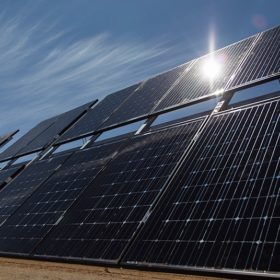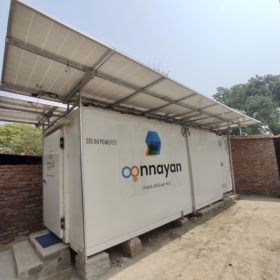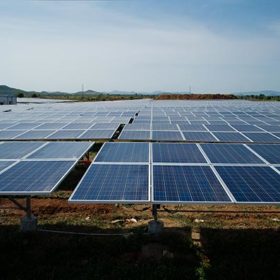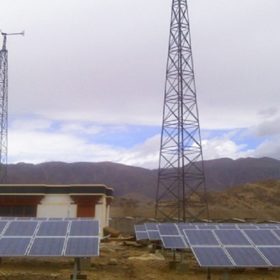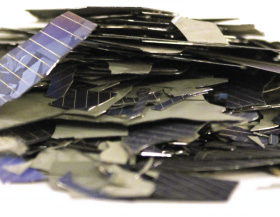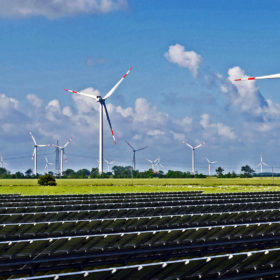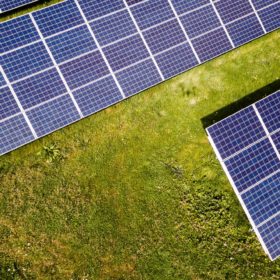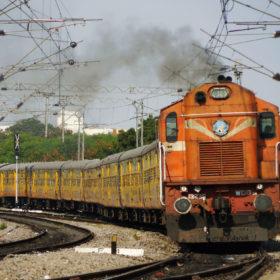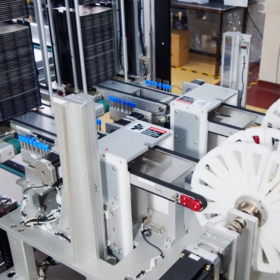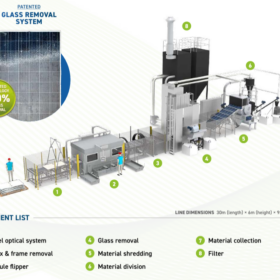Turbocharging rural entrepreneurship through distributed renewable energy
A robust distributed renewable energy ecosystem with a strong domestic industry will help provide good-quality, reliable electricity to rural households and enterprises and thus turbocharge green entrepreneurship—paving the way for a self-reliant India.
Jakson unveils lithium battery backup solution with a sub-5 ms response time
The EnerPack from Indian manufacturer Jakson consists of a hybrid inverter, lithium ferro phosphate batteries, and an intelligent energy management system that can smartly combine grid power, solar power, wind power, and even diesel generator power supply to maximize the use of renewable energy.
MYSUN wins 140 MW of open-access solar projects in Uttar Pradesh
The Delhi-based distributed solar company secured the projects under Uttar Pradesh Power Transmission Corporation Limited’s Open Access solar scheme in the State.
Oorja secures $1 million in seed funding
The decentralized solar solutions provider shall use the amount to scale up its pay-per-use, solar-powered irrigation, milling, and cooling projects for farmers and to expand its operations.
Tata Power secures 100 MW distributed solar order from EESL
The company’s arm Tata Power Solar has landed the engineering, procurement, and construction work for a cumulative 100 MW of distributed solar capacity in Maharashtra. The awarded capacity includes multiple ground-mounted projects.
Central Electronics Limited tenders 147 MW of decentralized solar in Maharashtra
Bids are invited to set up a cumulative 147 MW of grid-interactive decentralized solar capacity in Maharashtra. The solar power generating systems, in sizes ranging from 2 MW to 10 MW (AC), shall come up at lands within or around the various substations in the State.
New solar addition may generate 21 kilotonnes of PV module waste by 2030
India’s solar capacity growth up to 2030 also means the generation of a significant mass of PV module waste due to early failures or damages during transportation, installation, and operation. The waste generation could be 21 kilotonnes assuming India’s cumulative installed PV capacity grows to 287.4 GW by 2030 from 40 GW in 2020. This doesn’t include end-of-life panel waste as PV systems installed between 2020-30 are assumed to have at least 30 years of lifetime.
Responsible land-use for solar, wind plants could smooth the path for India’s energy transition
India will require large swaths of land for the huge expansion of renewable energy capacity over the coming decades. The energy transition requires planning for proper siting of these plants and solutions like agrivoltaics, distributed energy systems, and offshore wind to reduce land-use conflicts.
UK to invest $1.2 billion in green energy projects in India
UK’s development finance institution CDC will invest $1 billion in green projects in India between 2022-26. Besides, UK has committed a new $200-million private and multilateral investment into the joint UK-India Green Growth Equity Fund that invests in Indian renewable energy.
Indian Railways could power one in four trains with its own solar panels
Feeding solar electricity directly from its own panels into overhead lines on a fully-electrified rail network would be more cost-effective for the state-owned company than buying that green power from the grid, according to a new study.


